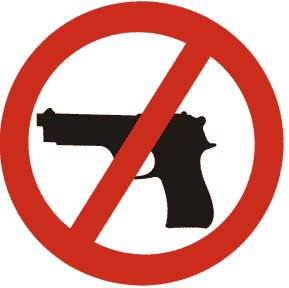The largest study of gun violence in the United States, released Thursday afternoon, confirms a point that should be obvious: widespread American gun ownership is fueling America’s gun violence epidemic.
The study, by Professor Michael Siegel at Boston University and two coauthors, has been peer-reviewed and is forthcoming in the American Journal of Public Health. Siegel and his colleagues compiled data on firearm homicides from all 50 states from 1981-2010, the longest stretch of time ever studied in this fashion, and set about seeing whether they could find any relationship between changes in gun ownership and murder using guns over time.
Since we know that violent crime rates overall declined during that period of time, the authors used something called “fixed effect regression” to account for any national trend other than changes in gun ownership. They also employed the largest-ever number of statistical controls for other variables in this kind of gun study: “age, gender, race/ethnicity, urbanization, poverty, unemployment, income, education, income inequality, divorce rate, alcohol use, violent crime rate, nonviolent crime rate, hate crime rate, number of hunting licenses, age-adjusted nonfirearm homicide rate, incarceration rate,and suicide rate” were all accounted for.
No good data on national rates of gun ownership exist (partly because of the NRA’s stranglehold on Congress), so the authors used the percentage of suicides that involve a firearm (FS/S) as a proxy. The theory, backed up by a wealth of data, is that the more guns there are any in any one place, the higher the percentage of people who commit suicide with guns as opposed to other mechanisms will be.
With all this preliminary work in hand, the authors ran a series of regressions to see what effect the overall national decline in firearm ownership from 1981 to 2010 had on gun homicides. The result was staggering: “for each 1 percentage point increase in proportion of household gun ownership,” Siegel et al. found, “firearm homicide rate increased by 0.9″ percent. A one standard deviation change in firearm ownership shifted gun murders by a staggering 12.9 percent.
To put this in perspective, take the state of Mississippi. “All other factors being equal,” the authors write, “our model would predict that if the FS/S in Mississippi were 57.7% (the average for all states) instead of 76.8% (the highest of all states), its firearm homicide rate would be 17% lower.” Since 475 people were murdered with a gun in Mississippi in 2010, that drop in gun ownership would translate to 80 lives saved in that year alone.
Of course, the authors don’t find that rates of gun ownership explain all of America’s gun violence epidemic: race, economic equality and generally violent areas all contribute to an area’s propensity for gun deaths, suggesting that broader social inequality, not gun ownership alone, contributes to the gun violence epidemic. Nevertheless, the fact that gun ownership mattered even when race and poverty were accounted for suggests that we can’t avoid talking about America’s fascination with guns when debating what to do about the roughly 11,000 Americans who are yearly murdered by gunfire.

